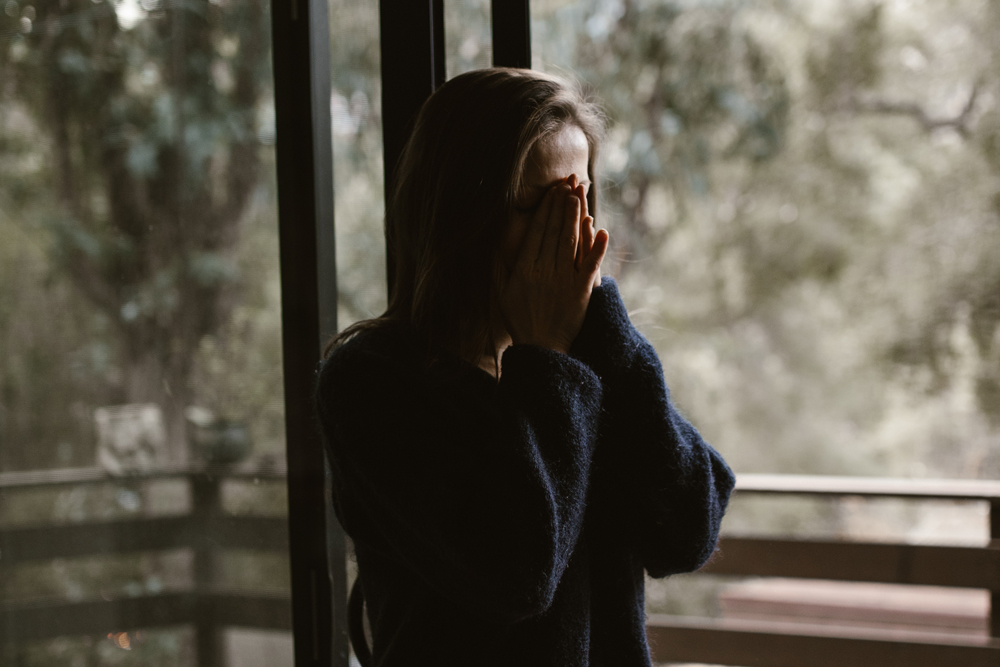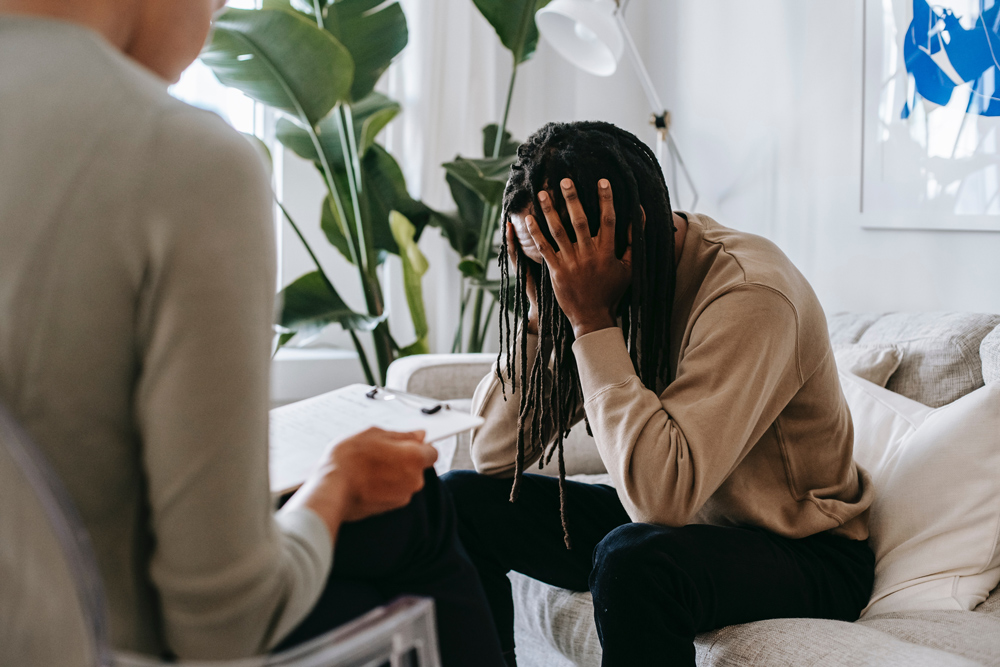Posttraumatic stress disorder is a psychiatric disorder that occurs in individuals who have experienced or witnessed a traumatic event. While the term was commonly associated with veterans and active-duty military years ago, PTSD can occur in anyone. Recent studies show that PTSD affects approximately 3.5% of U.S. adults each year, with an estimated one in 11 people being diagnosed in their lifetime.
For many people who have posttraumatic stress disorder, one of the most debilitating symptoms of the condition is flashbacks. Flashbacks can cause individuals with PTSD to experience physical reactions to triggers that remind them of the traumatic event that caused their diagnosis. Even worse, PTSD sufferers often believe they are experiencing the cause of their condition all over again with flashbacks.
Before we dive into coping with PTSD flashbacks, let’s talk a little more about the disorder and how flashbacks occur.
What is PTSD?
PTSD has been referred to by many names over the years. In the World War I era, the symptoms of this disorder were often referred to as “shell shock.” By World War II, PTSD was called “combat fatigue.” As more and more individuals came forward with symptoms of PTSD, it was discovered that posttraumatic stress disorder impacts a large group of people that extends beyond combat veterans. The increased focus and heightened awareness towards mental health also helped those suffering from the disorder find a diagnosis and get the proper treatment.
People diagnosed with PTSD typically have intense, disturbing thoughts and feelings related to a traumatic experience. Most commonly, these feelings last long after the traumatic event has ended. In some patients, symptoms of the disorder can emerge years after the traumatic event occurs, especially if they aren’t frequently exposed to triggers.
Most patients develop PTSD when they see or hear about an event involving actual or potential death, serious injury, or sexual violation. While doctors don’t know why the disorder occurs, the most common causes are a combination of the following:
- Stressful experiences or going through a significant amount of trauma in your life
- Inherited mental health risks
- Inherited features of your personality
- The way your brain regulates chemicals and hormones in response to stress
The most common types of traumatic events that lead to the development of PTSD include:
- Combat exposure
- Childhood abuse
- Sexual violence
- Physical assault
- Being threatened by a weapon
- Fearing for your life
- An accident
- A severe and life-threatening illness
- Being exposed to a natural disaster such as a fire
- Being mugged or robber
- Kidnapping
- Any other extreme or life-threatening event
While people of all ages can have posttraumatic stress disorder, some factors can leave you at a higher risk of developing the condition. This includes:
- Exposure to intense or long-lasting trauma
- Having experienced previous trauma earlier in life
- Working at a job that increases your risk of being exposed to traumatic events
- Having other mental health conditions such as anxiety and depression
- Problems with substance abuse
- Lacking a sound support system
- Having a family history of mental health problems

Posttraumatic stress disorder symptoms are grouped into four types, and symptoms can vary drastically from person to person. The most common symptoms patients face are:
Intrusive Memories
Symptoms of intrusive memories include:
- Recurrent, unwanted memories of the traumatic event
- Flashbacks or reliving the traumatic event as if it were happening again
- Upsetting dreams or nightmares
- Several emotional distress
- Physical reactions to something that reminds you of the traumatic event
Avoidance
Symptoms of avoidance typically include:
- Trying to avoid thinking about the traumatic event
- Avoiding talking about the traumatic event
- Avoiding places, activities, or people that remind you of the traumatic event
- Isolating yourself
Negative Changes in Thinking and Mood
The most common symptoms of adverse changes in thinking and mood include:
- Negative thoughts about yourself
- Negative thoughts about other people of the world
- Hopelessness about the future
- Memory problems or the inability to not remember essential parts of a traumatic event
- Difficulty maintaining close relationships
- Feeling detached from family and friends
- Lack of interest in things you once enjoyed
- Difficulty accepting positive emotions
- Feeling emotionally numb
Changes in Physical and Emotional Reactions
Also called arousal symptoms, these include:
- Being easily startled or frightened
- Always being on guard
- Self-destructive behavior
- Trouble sleeping
- Trouble concentrating
- Irritability
- Angry outbursts or aggressive behavior
- Overwhelming feelings of guilt or shame
PTSD symptoms vary in intensity over time. For example, you may have worsening symptoms when you are already stressed or come across reminders of the traumatic event.
How to Cope with PTSD Flashbacks
Flashbacks are one of the most common and challenging symptoms of PTSD. Anyone who has gone through a terrifying or life-threatening event or witnessed one can experience flashbacks. Flashbacks are commonly referred to as faulty memories.
When you think about a traumatic event, your brain creates two sets of information. The first is emotional information that indicates how the event made you feel. The second is the context of the event, such as where you were, who you were with, and what you were doing when the event occurred.
With a healthy memory, you can process both sets of information without an issue. When a flashback occurs, you experience an overflow of emotional content and a lack of context about the event. This causes you to experience life-like, vivid memories without the ability to distinguish between the past and present. This is why many individuals report reliving the event when exposed to triggers.
Coping with PTSD flashbacks effectively is a two-part treatment. Long-term treatment helps prevent relapse, and short-term treatment provides you with coping skills to use when a flashback occurs.
Treating PTSD Flashbacks

The right combination of treatment options can help you regain control of your life and overcome your flashbacks. Like any other mental health disorder, medication, therapy, or a combination of the two is the most effective approach in coping with flashbacks.
Several anti-depressant medications can be prescribed to help with the psychological effects of PTSD. Many prescription medications can treat the exact symptoms of your disorder, such as medications for panic attacks or insomnia. Talk to your healthcare provider to see if medication is the right treatment option for your symptoms.
Most healthcare professionals use a variety of psychotherapy techniques to help PTSD patients. This includes:
- Cognitive therapy: Also referred to as “talk therapy,” cognitive therapy helps you recognize the ways of thinking that keep you stuck in the past. Many patients with PTSD flashbacks use a combination of cognitive and exposure therapy for effective results.
- Exposure therapy: A type of behavioral therapy, exposure therapy helps you safely face situations and memories related to your trauma so you can learn how to cope with them more effectively. With the advances in the healthcare industry, virtual reality programs are one approach to safe exposure therapy.
- Eye movement desensitization and reprocessing: EMDR combines exposure therapy with a series of guided eye movements. The treatment helps you process traumatic memories and change how you react to them.
Coping with PTSD Flashbacks
While long-term treatment is often necessary, you should also learn about immediate coping strategies to alleviate the distress of PTSD flashbacks. Take the following steps to regain control of your life and prevent the suffering that comes from the symptoms of this disorder:
Follow a Treatment Plan
Finding the right treatment option will take time. Once you do find the right combination, it’s vital to stick to your treatment plan. Learn as much as you can about your disorder and how you are directly affected. This knowledge will help you understand your feelings and develop strategies to move forward.
Practice Self-Care

One of the most effective ways to cope with PTSD flashbacks is to take care of yourself. Prioritize your health and your personal needs. Get enough rest, follow a healthy diet, exercise, and take time to relax. Stay away from things that can worsen anxiety, such as caffeine, nicotine, and alcohol. Many individuals with PTSD flashbacks deal with rapid heartbeat and difficulty breathing. Focus on finding a deep breathing technique that helps your body cope with perceived threats.
Break the Cycle
When flashbacks occur or anxiety sets in, do something to break the cycle. While it’s easy to sit alone and let your mind take over, it’s much more effective to go for a walk or participate in a hobby you enjoy. Keep an item nearby that reminds you of the present. Look at or touch this item when flashbacks occur. This can help keep you grounded.
Create a mantra you can use during PTSD flashbacks. Repeating a word or phrase that reminds you that you are safe is an effective strategy to overcome flashbacks. Take notes to help identify triggers and help you recognize what causes a flashback. This can be very helpful in future therapy sessions.
Find the Right Support

Finally, stay connected to supportive and caring people. Talk to family, friends, community leaders, or your therapist when PTSD flashbacks set in. While you don’t always have to talk about the trauma, having someone to offer comfort and healing can help you overcome your symptoms long-term.
Find a therapist who makes you feel comfortable and safe. It’s critical to find someone you can trust to share your experience and express your feelings. Consider joining a support group. This is an effective way to connect with people who have experienced similar traumas or PTSD symptoms.
Remember, PTSD is a common condition that millions of patients face. For more information on healing from trauma disorders like PTSD, visit our trauma therapy services and treatment programs. Feel free to contact us with any questions or discuss your personal needs and schedule an appointment to take back your life.
